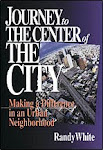
Standing in the Hagia Sophia (The Church of Divine Wisdom) in Istanbul (ancient Byzantium, renamed Constantinople) is an experience of both amazement and deep frustration. Built in the sixth century by Emperor Justinian it was a wonder of the world, a thousand years ahead of its time in design and construction. It flourished as a center of Orthodox worship until the overthrow of the city by the Ottoman Empire, which turned it into a mosque. The majority of its amazing mosaics were plastered over by the Islamic prohibition on images. Now a museum they have uncovered a few (like my favorite above) to inspire visitors.
To stand in front of these is to open a window to the theology of early Christians. Jesus is clad in blue (for his humanity) and gold (for his deity). He often holds his right hand in a pose that crosses the first two fingers to convey his two natures, and combines the final two fingers with his thumb to convey the idea of the trinity. The devotion of the early faithful to these images is seen in the loving detail, right down to the gentle color of the cheek and the mournful emotion of the eyes. While Orthodox Christians do not worship these icons, they have for fifteen hundred years used them in worship to be transported from the temporal to the eternal.

I have been standing before these images in Turkish caves and Romanian churches now for weeks and I am realizing how dissatisfied I am with the casualness of my faith. The strength of evangelical tradition -- of what a friend we have in Jesus -- is also its weakness. It is a comfortable faith that is long on chattiness with the divine, and short on awe. Even if I cannot imagine adopting Orthodox practice or liturgy, I also cannot imagine a deepening of my faith if I continue to neglect the place of the imagination in worship or be so centered on the message and its social or ethical implications that I forget the real presence of God. I have found that great art can help in this process, as if providing a window through which we can glimpse the eternal.

In this (poor quality picture) of a Hagia Sophia mosaic, Emperor Constantine stands to the right of the Madonna and Child and offers to them what is most precious to him -- the city which he has created. On the left, Emperor Justinian stands and offers what is most precious to him -- the amazing church he constructed. The fact that both men were not the most admirable followers of Christ should not diminish an important lesson here. We should live our lives in such awe of God that we should direct the focus of our lives toward accomplishing something beautiful for the Kingdom, something worthy of the Eternal, and dedicate it to the author of beauty himself.









